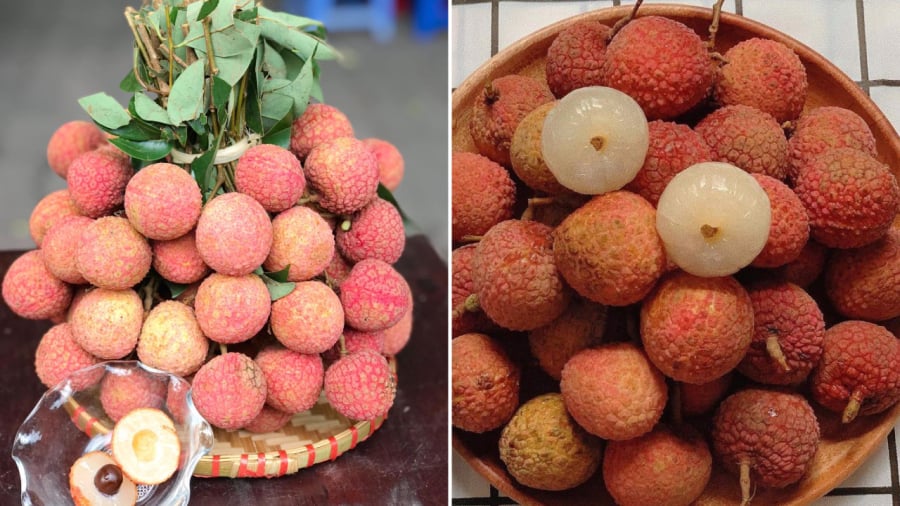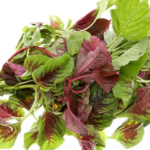Lychees are a delicious treat and a specialty of the summer season. During lychee season, they are not only affordable but also at their freshest. Now is the perfect time to indulge in these sweet fruits and explore various ways to enjoy them—from eating them as they are to preserving them in syrup for tea or baking.
To ensure you select the tastiest lychees, here are some handy tips to keep in mind.
Tips for Choosing Fresh Lychees
- Examine the Lychee’s Skin
The appearance of a lychee’s skin can tell you a lot about its freshness. Opt for clusters with supple stems and fresh, vibrant leaves that are firmly attached to the branch. These signs indicate that the lychees were recently harvested.
On the other hand, avoid clusters with wilted branches and leaves, as these suggest that the lychees were picked a while ago and may not be as fresh. The wilted appearance of the branches and leaves is a tell-tale sign of their age.
In terms of color, the most delectable lychees will don a reddish-pink hue, and their shape will be uniformly round. Compared to hybrid lychees, authentic lychees will be slightly smaller and more oval in shape. The skin of hybrid lychees tends to be a deeper shade of red, and their shape is often longer and more elongated.
A smooth spine indicates ripeness, while lychees with numerous sharp spines are unripe and will taste sour.

- Hands-on Inspection
Don’t hesitate to feel the lychees with your hands. Ripe lychees will have a slight give when gently pressed, yet they should still feel plump and juicy. Avoid overly soft lychees that lack resilience, as they may have passed their prime and could have fermented flesh, compromising their taste.
- Sniff Test
Lychees have a subtle fragrance, so bring them close to your nose to detect their aroma. Ripe lychees will exude a gentle, natural sweetness. Steer clear of lychees with a fermented or sour smell, as these indicate spoilage.
- Sample Testing
If possible, ask the vendor if you can peel and taste one or two lychees. The flesh of a ripe lychee should be translucent white and juicy, and when freshly peeled, it should exude a slightly sticky syrup with a delicate fragrance. Additionally, avoid lychees with large seeds that are difficult to remove.
Tasting a lychee will also give you a good indication of its ripeness and flavor.
Some Precautions When Eating Lychees
While lychees are a delightful treat, packed with vitamins and minerals, it’s important not to overindulge. Lychees contain a significant amount of natural sugar, and excessive consumption can lead to weight gain. Individuals with diabetes should especially monitor their intake, as the high sugar content can adversely affect blood sugar control.
It’s best to enjoy lychees in moderation, with young children consuming no more than 2-3 at a time. Always remind children to spit out the seeds, and for very young children, consider removing the seeds yourself to prevent choking hazards.
Lychees are considered a heaty fruit in traditional medicine. If you’re experiencing heat-related symptoms like excessive thirst, acne, or fever, it’s advisable to avoid lychees, as they may aggravate these conditions. The high sugar content in lychees can also contribute to a feeling of increased heat in the body, leading to discomfort and skin issues.



































